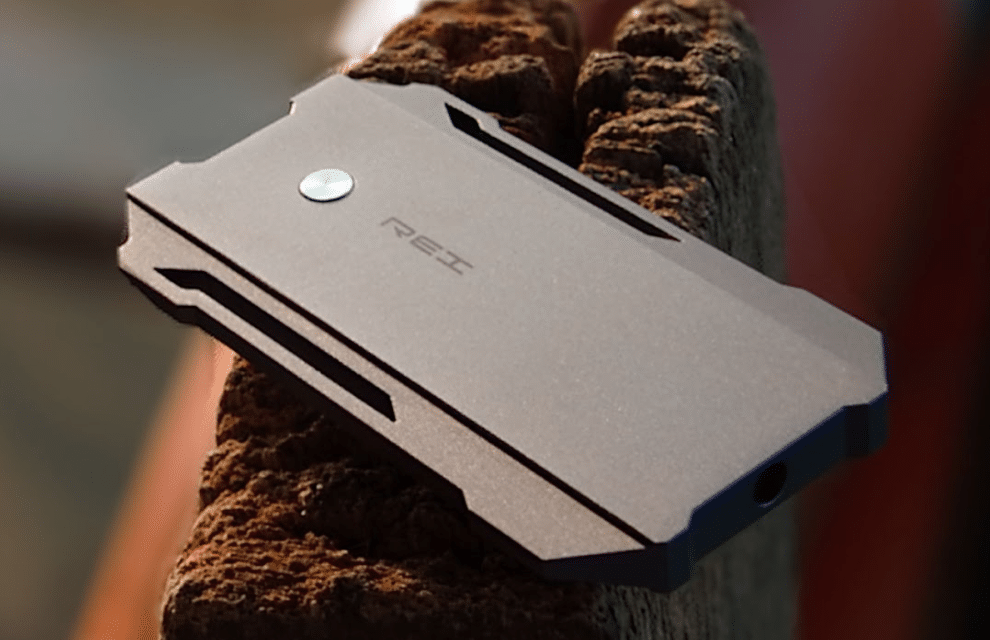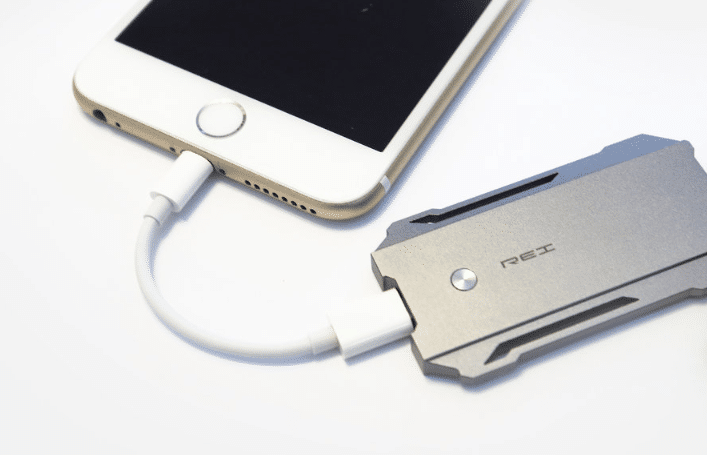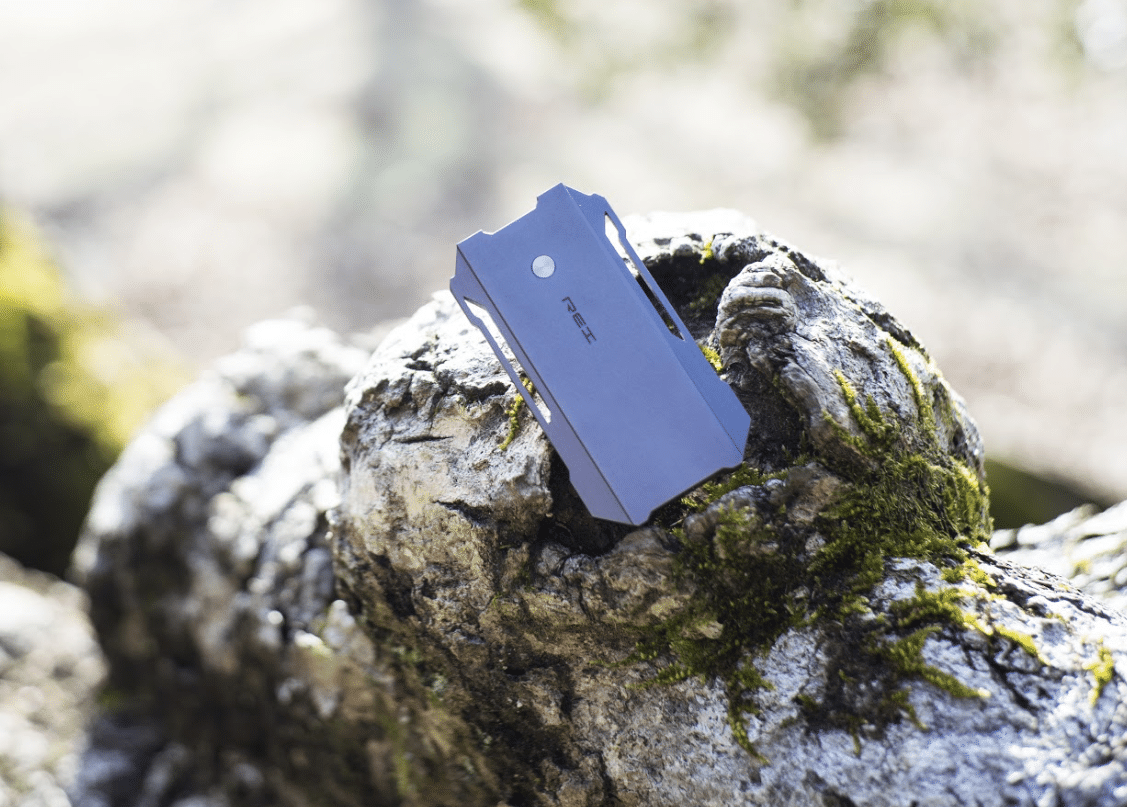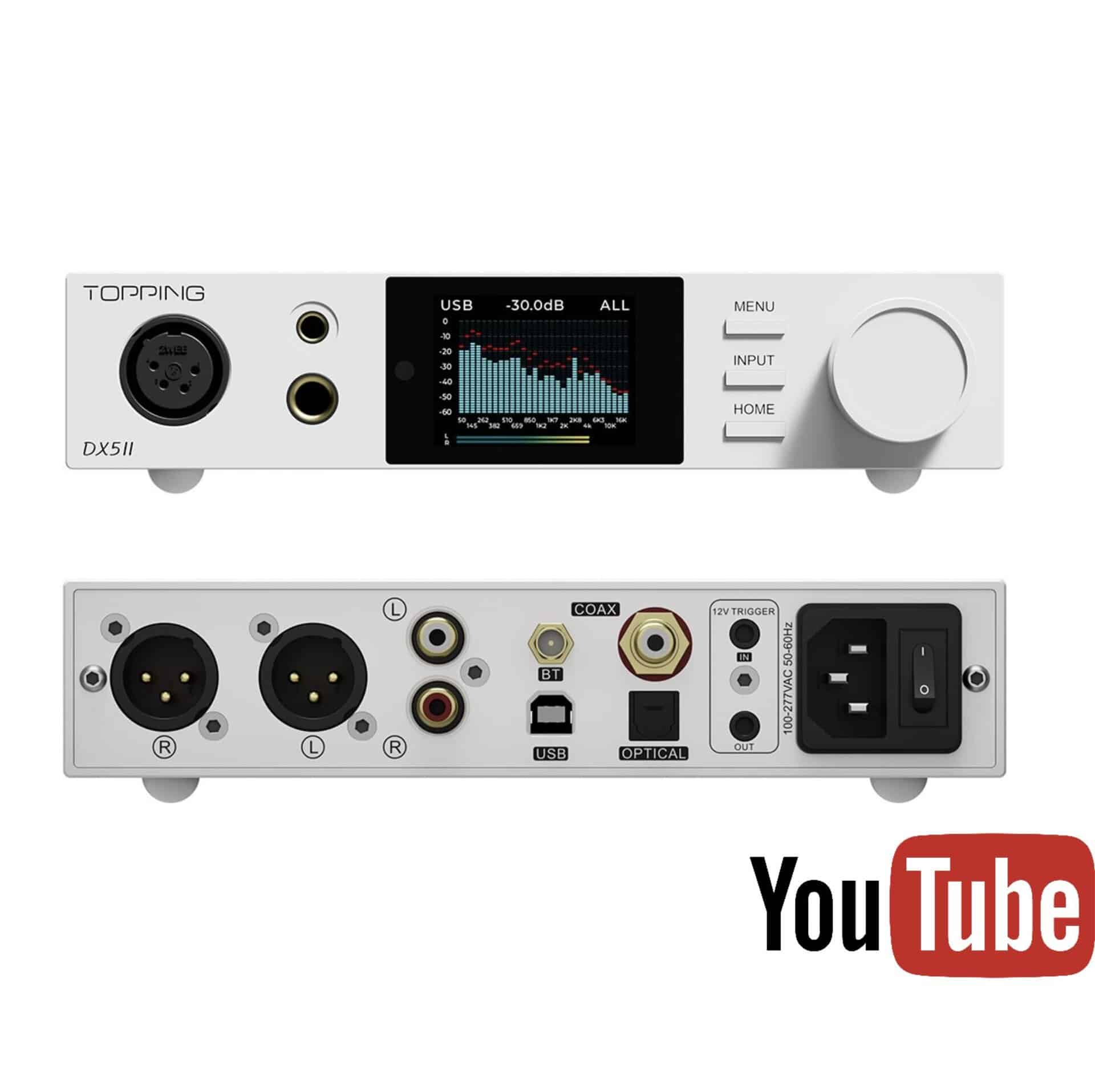The Article
Cozoy Rei: Dinky DAC Does DSD
6th February 2017
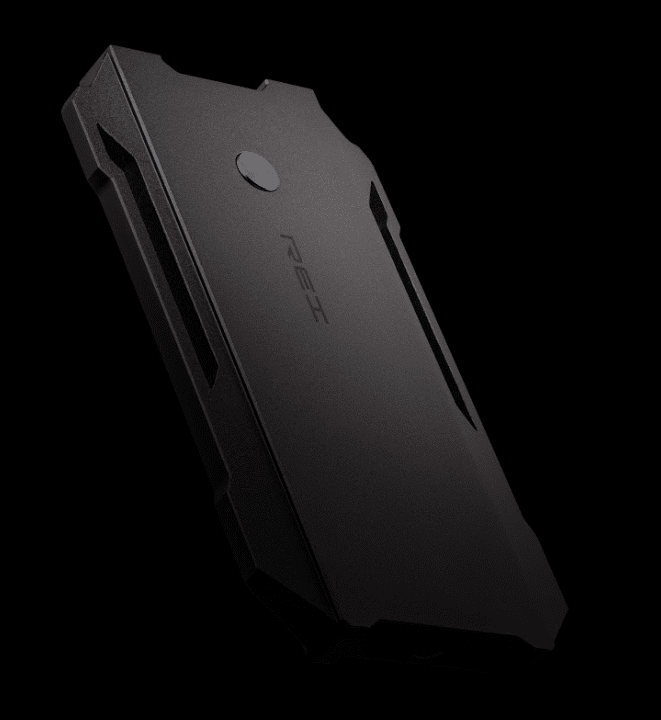
Looking like the right fit for use with a smartphone or a laptop, Paul Rigby reviews Cozoy’s tiny, DSD-ready Rei DAC
My impressions of this new DAC began much earlier than the sound test or, indeed, holding the chassis in my hand. My first impression began before I even saw the thing.
The box itself and the unboxing of the Rei DAC is a sheer joy. Sounds silly, doesn’t it? But Cozoy has learned from Apple here. The company understands that technology fulfilment begins with the box.
Speaking of the Cupertino-based outfit, the quality of the Cozoy packaging is right up there with Apple standards. In fact, this product would fit right in with any other Apple Store product. Tightly packed, without a wasted millimetre of space, after opening the sturdy pizza-style box, you are first hit with a chic black envelope containing three thick cards offering essential information on operating the DAC, downloading a free DSD track to get you underway and downloading an associated app from the Apple App Store, for iPhones only.
Called the Relisten Player, from Neoduction, it offers full support for Cozoy DACs, access to Dropbox, includes file information on the display, a realtime VU meter and has eight different process models plus support for WAV, FLAC, AIF, and MP3. You have access to the Lite option with a time limit of 100 minutes use. After that, you are obliged to bin it or pay £40 for the full version. The point of the app is its ‘restoration’ algorithms. The company claims that your music never sounded better after running through this software. Well, we’ll see.
Back to the packaging then and a white box running along the side of the box includes three short convertor cables within. On one end of each is a mini-USB plug to fit into the DAC. The other ends of the short cables, which are only around 100mm long, include connections to a full sized USB for use on laptops and desktop computers and the like, another mini-USB plus to connect to other music players and Android devices and a standard iOS Lightning connector to plug in current model iPhones, iPads and so on.
Situated just above this convertor cable container is the DAC itself, supporting digital files up to 32bit/384kHz PCM and up to DSD256. Light, beautifully made and designed, flat and alien-esque or science fiction-like in a Blade Runner kinda way. On the top surface of the DAC is a single play/pause button. On each end of this flat biscuit-shaped DAC is a mini-USB port with, at the opposite end, a mini-headphone port. There’s no battery inside just an “ultra-low ripple”, six trays of discreet regulators, linear power supply and an asynchronous clock. And that’s it. Minimalist it might be but it’s a desirable piece of kit. Make no mistake about it.
That said, you have to look carefully at your requirements and take a view from that. it doesn’t have the options that you will find on the similarly priced Chord Mojo, for example. The latter has two headphone sockets and the addition of optical and coax sockets with sonic resolution choices reflected in visual responses and for volume on display. Hence, style will not be the only reason for purchasing the Rei, practical choices will play a part. In this case, the Rei is a far lighter and svelte piece of kit as opposed to the miniature brick that is the Mojo.
That said, before I fill it full of power and listen to the Rei, the Cozoy received full marks in terms of design and presentation.
SOUND QUALITY
Before we get to the DAC itself, let’s address the issue of the app to see if this software should be used as part of the sound testing. This is not exactly a cheap piece of software and so you would need some sonic assurance that it is doing a good job on your music. The essence of the app is enhancing music quality. This is, after all, an app that has been designed to run specifically on iOS devices: not exactly audiophile music platforms. Hence, I tested the Relisten app on a vanilla iPhone 6S, via the headphone port, without the DAC for now, just to see what it could do. I plugged in my Sennheiser HD800s (with Kimber Axios cable attached) to give it plenty of headroom and space to manoeuvre.
I played a basic 192kHz MP3 of Marvin Gaye’s hit single, Mercy Mercy Me and was initially irritated by the on screen rotary controls which were both unresponsive and seemed to have a mind of their own. Roaming my finger around the rotary images sometimes – but not all of the time – changed the setting. Sometimes I motioned to increase the volume but the rotary selector stopped and then reduced it on its own!
Despite the apparent complexity of the interface and options, the app offers a simple service. It effectively adds space and air into the soundstage to provide a more naturalistic and open presentation. The control options are, effectively, varying volume levels. By doing this, Gaye’s vocals provided a more relaxed delivery, bass added a measure of extra focus while piano was apparently more complex. The processed music still cannot be rescued from the crippled MP3 format. This is not magic, it’s an algorithm. The poor MP3 file remains the same in its physical sense. What the app does is to process that source in a different manner. That said, the enhancements to the midrange gave the music more space to manoeuvre. Increasing the Preset rotary control merely increased volume but did so without adding any hardness or compressive effects to the poor quality MP3 file. The Enhance Classic button found in the centre of the screen was just a further volume boost to the level that you already have.
In performance terms, the Relisten works. Would I pay £40 for the full version, though? As someone who plays digital files via several different non-iOS devices, I would think twice. At £15, I’d grab it like a shot…£20 at a push. Why? Because, it does part (only part, I emphasise, not all) of the job that a headphone amplifier/DAC does. That is, enhancing the basic sound of the iOS device. In those terms, it offers some value for money and you don’t have to lug around extra hardware, the enhancements are all invisible and in software only.
In addition, if your iOS device is the most important part of your digital musical experience then Relisten will be worth it for your musical enjoyment. Check out the Lite version first and see if that interface is an issue for you, though. Relisten works, yes, but that price point and interface quirks might put people off.
With Relisten in place, I then plugged in the Rei DAC to see what changes it brought to the music. The most interesting improvement was the imagery. The DAC centred the Gaye vocal, making him more prominent within the mix. The other major difference was the subtle and nuanced secondary percussion. The bongo drums, placed off to the edge of the mix, were dominant with a great degree of reverb after each strike while the later introduction of the strings no longer had a plastic, falsity about them, there was more tonal detail within this section. Of course, all of this is relative, the source remained a basic MP3 file. Yet the sound quality made MP3 listening that much more pleasurable.
Plugging in Cozoy’s own Aegis DAC by comparison, the Rei offered a more spacious and open performance with a greater dynamic reach for the upper midrange and more bass character for the lower frequencies plus greater insight in terms of available detail. So, even in terms of a meagre MP3, the Rei showed its superiority over the Aegis, itself a highly respected (by myself at least) Cozoy DAC (read the review of the Aegis HERE).
I then moved away from iOS and onto my MacBook Pro and played a 24bit/88.2kHz WAV of singer-songwriter, David Elias’ song, Vision of Her via the Audirvana Plus software player. This is a simple presentation of voice and closely mic’d acoustic guitar. The first review report I have here is how very sensitive the Rei was in playback. You’ll be finding yourself reaching for the volume button to decrease the gain. Ideal for those music players with a low span of gain to play with.
In sonic terms, the DAC was neutral. No one frequency had prominence or dominated the mix. That meant several things. Firstly, detail was never masked by bass bloom which added to the inherent clarity which also meant that there was plenty of dynamic room for the quiet to blend with the loud and never to feel awkward or unbalanced. In fact, the Rei was all about balance. The upper midrange combined a delicacy of detail with a tonal accuracy that was quite delightful. Subtle notes such as Elias adding more effort and pressure on the guitar was tracked easily while, because of the neutrality, all of the nuances in the vocal was detected which meant that more emotion and and vocal light and shade was in evidence.
Part of the point of this DAC is its DSD support so I played this same track at DSD64. That neutrality continued in a very pleasant manner. Elias’ voice offered a great textural quality, quite breathy and affected in the lower frequency regions (in a good way, of course) while the bass strings of the guitar were full and resonant.
Moving to DSD128, I felt that I was nearing the sonic limitations of the Rei. That is, I began to hear sonic faults in some of the frequency extremes. Not in any major way, just little points here and there. Eric Bibb’s Meeting at the Building produced a tremendous amount of low noise from which a great detail of detail flowed. Transparency was excellent in terms of both the lead and backing voices while Bibb’s own blues guitar, despite a slight spotlight being thrown upon the upper mids at this high DSD quality, was both focused and precise in terms of string plucking and subtle note bending while percussion offered a crisp and naturalistic presentation. The Rei’s neutrality was crucial at this resolution. Anything less, any hint of emphasis, would have destroyed the balanced soundstage.
Finally, at DSD256, I played Arnesen’s Magnificat 4. Et misericordia with vocals by Kim Andre Arnesen. Again, because of the very high quality in terms of resolution, the Rei struggled a touch to completely control the upper mid crescendos, being a little forward in tone. Frankly, though, for this tiny unit and at this price, any such criticism is nit picking and unfair to the Rei. That it performed so well despite its own hardware restrictions and limitations was quite remarkable. Strings were flowing and textural, vocals were clear and informative, piano was focused, light and responsive while lower frequencies were tonally balanced.
CONCLUSION
For a DAC at this price and at this tiny size, the Rei had no right to sound this good: but it did. Covering a gamut of resolutions and performing brilliantly throughout, the Rei remained remarkably informative and neutral over all tests. For the price, it’s a startling piece of technology.
COZOY REI DAC
Price: $550 (shipped from Cozoy, direct)
Website: www.cozoyaudio.com or [email protected]
(Notes: You can buy direct from the Cozoy website using Paypal, approx. prices relate to the varying currency conversion rates and any Paypal charges that you might incur)
GOOD: neutral presentation, open soundstage, transparency, clarity, value, design
BAD: slight straining with very best quality DSD files
RATING: 9
RELISTEN iOS APP
Website: www.relistenplayer.com or Apple’s App Store
Price: £40 [for full version]
Good: spacious midrange, open soundstage, file support, no hardware required
BAD: interface quirks, price
RATING: 6
REFERENCE
Cozoy Aegis DAC
Chord Mojo DAC
Sennheiser HD800 headphones
Kimber Axios headphone cable
iPhone 6S smartphone
MacBook Pro (SSD)

